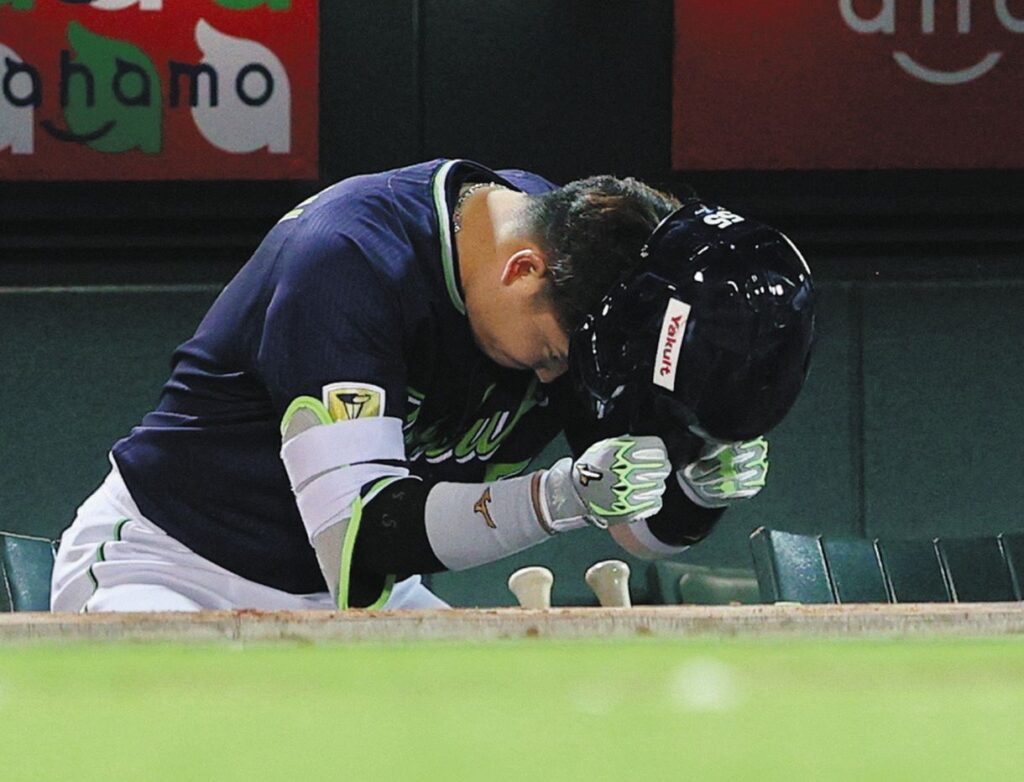
Last year, Munetaka Murakami gripped the nation with a historic record-setting season. At the forefront of his countless achievements was setting the single-season NPB home run record for a Japanese-born player, surpassing the legend Sadaharu Oh with his 56th home run in his final at-bat of the regular season. Over a three-month stretch from June to August, Murakami hit .393 with 34 home runs, 69 RBI, and an OPS over 1.300. Overall, the 22-year-old batted .318/.457/.710 with 10.3 WAR en route to his second consecutive Central League MVP award. His performance was so godlike that “Murakami-sama” – a play on words replacing the last character of his family name with God – was named Japan’s word of the year for 2022.
Since his scorching-hot summer, however, Murakami has looked anything but godlike. He stumbled across the finish line in 2022, falling into a massive slump, which carried over into the Japan Series, the 2023 World Baseball Classic, and the start of the 2023 NPB season. Over his last 46 games, including the postseason and WBC, Murakami is slashing .194/.350/.369 with just ten doubles and six home runs. He has been disciplined enough to maintain an elite 18.5% walk rate, but his abysmal strikeout rate of 31.5% is on par with his 2019 rookie season.
When averaged out over a full 143-game NPB season, Murakami’s most recent 200-plate appearance sample size puts him on pace for 18 home runs and 195 strikeouts. Suffice to say, these are not the numbers of a bonafide superstar and Triple Crown winner. Instead, his production is more in-line with what one might expect from an all-or-nothing slugger like Joey Gallo.
It’s difficult to understand what exactly is wrong with Murakami. A teammate or a coach would have already diagnosed his problems if it were that easy. But it is safe to assume that Murakami suffers from both mental and mechanical issues. The pressure of breaking Sadaharu Oh’s record and being revered as a God is enough to make anyone lose their nerve. During the WBC, Hall of Famer Alex Ramirez pointed out that Murakami is not keeping his head steady when he swings, causing him to lose track of the ball. Whatever his sudden problems are, Murakami often looks exposed at the plate and fails to jump on pitches that he previously crushed on a nightly basis.
From 2019 to 2022, Murakami’s O-Swing% (Swings at pitches outside the strike zone) was remarkably consistent between 23.5 and 24.5%. However, as of April 19, Murakami’s O-Swing% in 2023 is 28.3%, a 4.8% increase from last year. Moreover, his Z-Swing% (Swings at pitches inside the strike zone) is 58.0%, a career-low by a significant margin. In other words, Murakami is swinging at more balls while taking more strikes than at any point in his career.
Last season, Murakami successfully sprayed the ball to all fields, going up the middle equally as often as he pulled the ball. So far this season, he’s become pull-heavy, pulling 46.7% of batted balls, as opposed to just 26.7% of balls going to center and opposite field, respectively. His hard-hit% of 38.7% still ranks top 20 in NPB among qualified hitters but is a far cry from his monstrous league-best 48.5 hard-hit% in 2022.

Even at his worst, Murakami has had big career-defining moments. Most notably, he clobbered a walk-off double against Giovanny Gallegos in the WBC Semifinals and followed it up with a 115-mph-exit-velocity home run against Merrill Kelly in the Finals. The mental fortitude it required for Murakami to put his poor tournament performance behind him to come up clutch when Japan needed him most cannot be understated.
But after seeing the astonishing ceiling of Murakami’s game last summer, it’s apparent that we are now witnessing Murakami’s floor. It’s only natural for a 23-year-old to face adversity. The Murakami that we all know and love is still in him somewhere. And when he rediscovers himself, Murakami-sama may come back even stronger.
